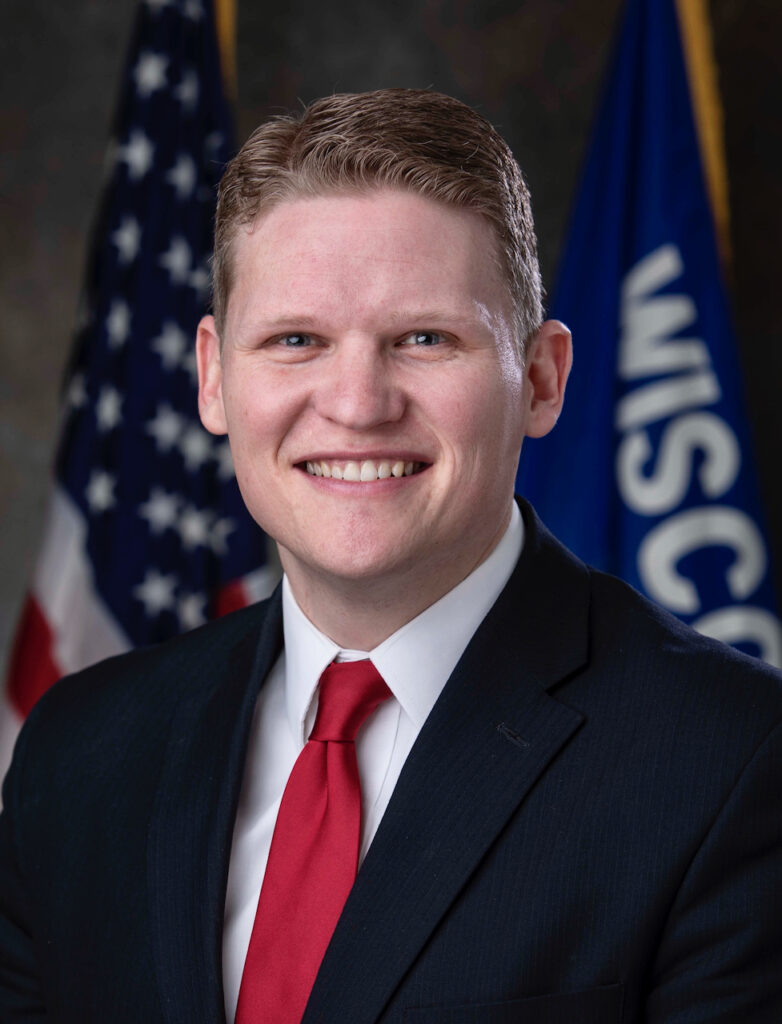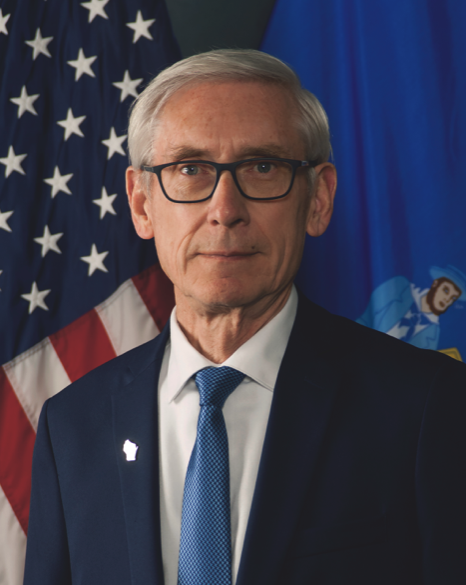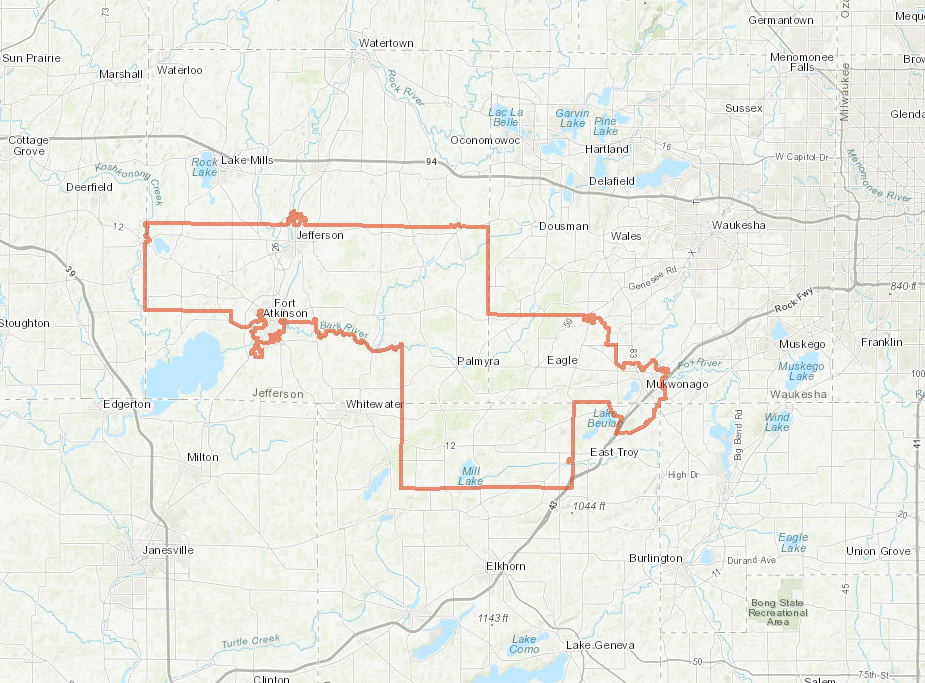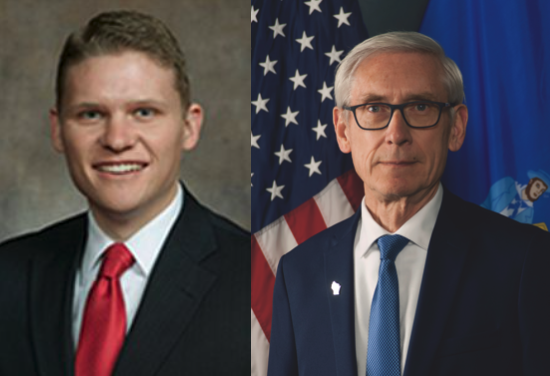Editor’s note: the following statement has been released by the office of State Rep. Cody Horlacher in response to the Wisconsin State of the State address delivered Tuesday by Gov. Tony Evers. For context, excerpts from the 2022 State of the State Address released by the office of the Governor are also included.
A news release from the office of State Rep. Cody Horlacher states the following: Last night, Governor Evers delivered his State of the State address to the Wisconsin Legislature.
Rep. Horlacher (R-Mukwonago) issued the following statement in response:
“Rather than finding ways to push Wisconsin forward, the Governor continues to support policies that pull this state backwards. Wisconsin has plenty of workers, yet is still facing a labor shortage. Police officers are threatened by the communities they are trying to protect, yet the Governor wants to remain soft on crime. I am glad that the Republicans have introduced packages of bills that would support both the workforce and our law enforcement.
“It is also not surprising that even though Governor Evers refuses to converse with the Legislature, he is more than happy to take credit for the tax cuts. I find this particularly interesting given the fact that his proposed budget increased taxes by $1 billion.
“Hopefully the Governor will end the session on a good note by signing bills that put the people of Wisconsin first into law.”
State of the State
Editor’s note: the following excerpts from the 2022 State of the State Address as delivered Tuesday by Gov. Tony Evers have been released by the Office of the Governor.
According to information released by the Governor’s office, excerpts from Gov. Tony Evers’ 2022 State of the State address as prepared for delivery, follow. The State of the State address was delivered Tuesday at the state Capitol. The text provided is as it appears in the released information.
…
We’ve worked hard to ensure our workers had jobs to return to after this pandemic. Through federal pandemic aid to our state, we’ve invested $1 billion into supporting our small businesses, farmers, and tourism, lodging, and entertainment industries. To date, we’ve supported more than 100,000 small businesses, and nearly 3,000 of those small businesses have opened up new storefronts on Main Streets across our state.
…
Throughout the pandemic, we were also able to keep all 375 transportation projects during the 2020 construction season on track. And because we did, we secured $105 million reallocated from other states to invest back into our infrastructure. We’ve also improved more than 1,770 miles of highways and more than 1,250 bridges—and if you laid out all the highways we’ve fixed end to end, you could just about drive from Platteville to Denver and back.
…
I also directed $100 million to support Wisconsin farmers through our Farm Support Program. In one round alone, we were able to help more than 20,000 farmers, and in more than half of Wisconsin’s 72 counties, our support for farmers through this program exceeded $1 million.
…
I’ve also directed more than $100 million through federal pandemic aid to expand access to reliable, affordable, high-speed internet across our state. These funds alone—which included the largest single round of broadband funding in state history—are projected to give new or improved broadband access to more than 110,000 Wisconsinites in nearly 50,000 homes as well as almost 2,200 businesses. During my time as governor, we will have invested almost 15 times more into expanding high-speed internet than the prior four years combined. All told, our investments since 2019 are providing more than 300,000 homes and businesses with high-quality, high-speed broadband.
…
These efforts have been critical for our economic recovery, and we’ve worked hard to get support out the door quickly to folks who need it. An analysis from November showed Wisconsin ranked second in the Midwest for getting our federal aid allocated. And I’m proud to report that, as a share of the federal aid our state has received, Wisconsin ranked second in the country for aid we’ve directed to economic development, and we ranked first in the country in aid we’ve allocated to businesses.
…
And Wisconsinites are working hard. In January of 2019, our unemployment rate was 3.1 percent. Today, our unemployment rate has not only returned to pre-pandemic unemployment levels, it’s better. At 2.8 percent, we now have the lowest unemployment rate and the fewest number of people unemployed ever in state history.
…
But with so many Wisconsinites already working, I know employers struggle with the same challenges they’ve faced for a decade trying to find new workers to fill jobs. We’ve gotten to work trying to find innovative, long-term solutions to the workforce challenges we face. We’ve also recognized that different parts of our state have different needs, whether it’s making childcare more affordable and accessible, training more high-skilled workers, or more apprenticeship opportunities for high schoolers. So, we’ve invested nearly $60 million into 12 regionally-based programs to meet the unique needs of different communities. And, after workers lost their jobs during the pandemic, we invested $20 million into helping thousands of workers get new skills and training to find new jobs.
…
We’ve also been working hard to keep more money in Wisconsinites’ pockets. Last year, we provided $480 million in tax relief for Wisconsin businesses and families affected by the pandemic. Republicans and Democrats also found common ground, and I was glad to deliver on my promise to cut taxes for middle-class families by 15 percent by signing one of the largest tax cuts in state history. Through all of the tax cuts I’ve signed into law, 86 percent of Wisconsin taxpayers will see a 15 percent income tax cut.
…
At the same time, while the economy has reopened and demand has surged, some corporations have taken advantage—they’ve squeezed consumers for every extra penny, raising everyday costs for folks in Wisconsin and across our country. A report released last week showed national inflation is the highest it’s been in four decades. And now small businesses and working Wisconsinites and families are concerned about the rising costs at gas pumps and in grocery store aisles. And businesses face challenges getting supplies and resources.
So, I directed new changes that took effect in the new year to ensure Wisconsinites had extra money each month to help make ends meet. With these changes, coupled with the tax cuts I’ve signed into law, if you and your spouse each make $50,000, you’ll see over $1,200 more for your household in your paychecks this year.
…
We had ‘unprecedented’ revenue projections last year and we closed out fiscal year 2021 with the highest-ever positive GAAP balance in state history at more than $1.1 billion. Last month, after receiving the great news about our low unemployment rate, we received even more good news. A new report showed Wisconsin is projected to have a $3.8 billion surplus—that’s billion with a B—in our state’s checking account at the end of this biennium. And that’s not even including the more than $1.7 billion sitting in our ‘rainy day’ fund, which is the highest it’s ever been in Wisconsin state history.

State Rep. Cody Horlacher

Gov. Tony Evers

Cody Horlacher is the State Rep. of Wisconsin Assembly District 33. The above map outlines the district. A closer view can be found here: https://maps.legis.wisconsin.gov/?asm=33&single=y.
This post has already been read 1400 times!
